Abstract
The development of interactive programmed instruction using a microcomputer as a teaching machine is described. The program applied a constructed-response matching-to-sample procedure to computer-assisted spelling instruction and review. On each trial, subjects were presented with a sample stimulus and a choice pool consisting of 10 individual letters. In initial training, sample stimuli were arrays of letters, and subjects were taught to construct identical arrays by touching the matching letters in the choice pool. After generalized constructed-response identity matching was established, pictures (line drawings) of common objects were presented as samples. At first, correct spelling was prompted by also presenting the printed name to be "copied" via identity matching; then the prompts were faded out. The program was implemented with 2 mentally retarded individuals. Assessment trials determined appropriate words for training. Correct spelling was established via the prompt-fading procedure; training trials were interspersed among baseline trials that reviewed and maintained spelling of previously learned words. As new words were learned, they were added to a cumulative baseline to generate an individualized review and practice battery for each subject.
Full text
PDF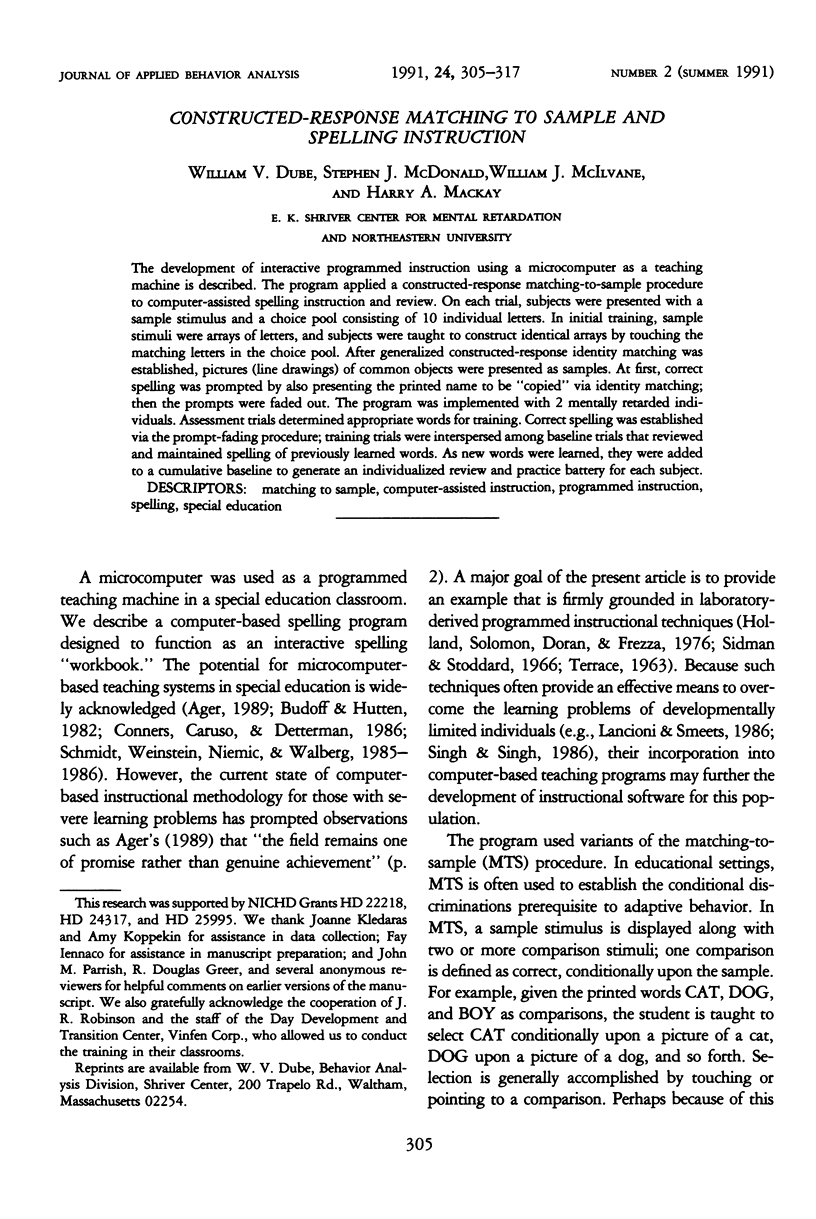
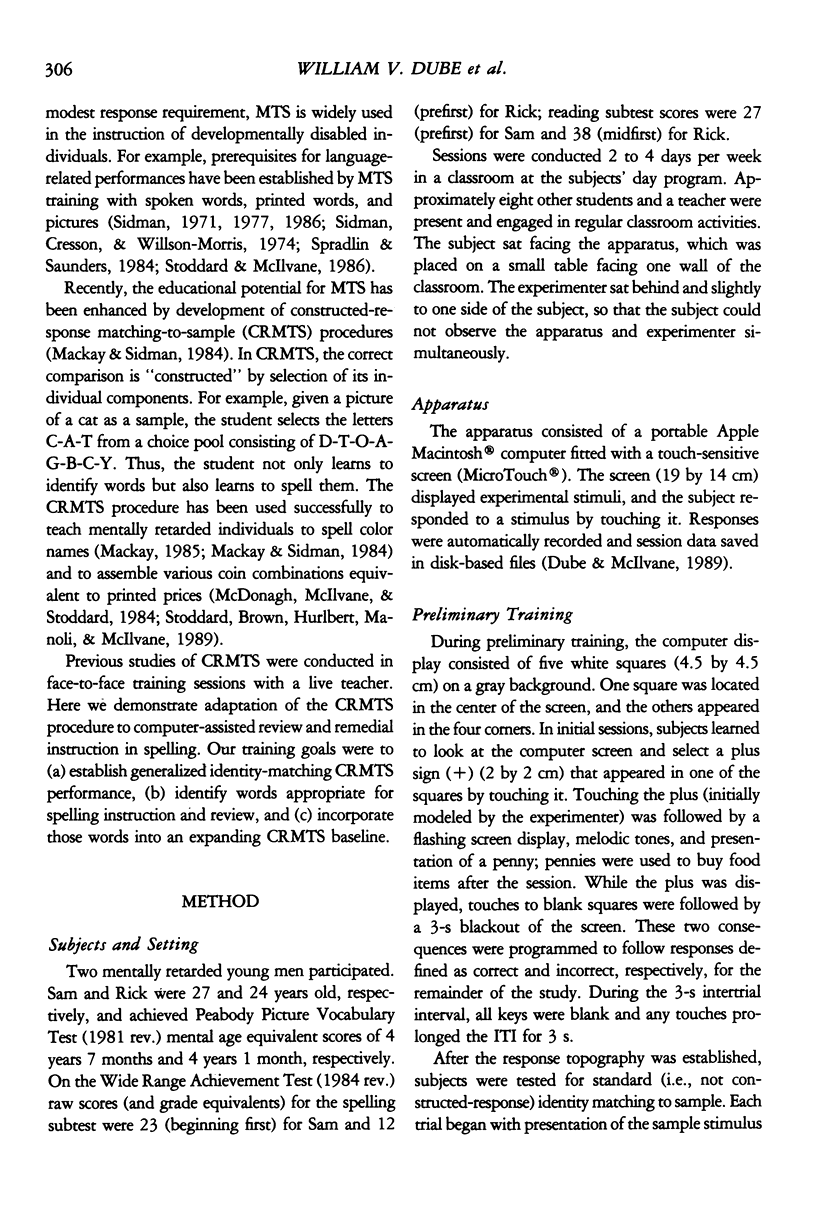
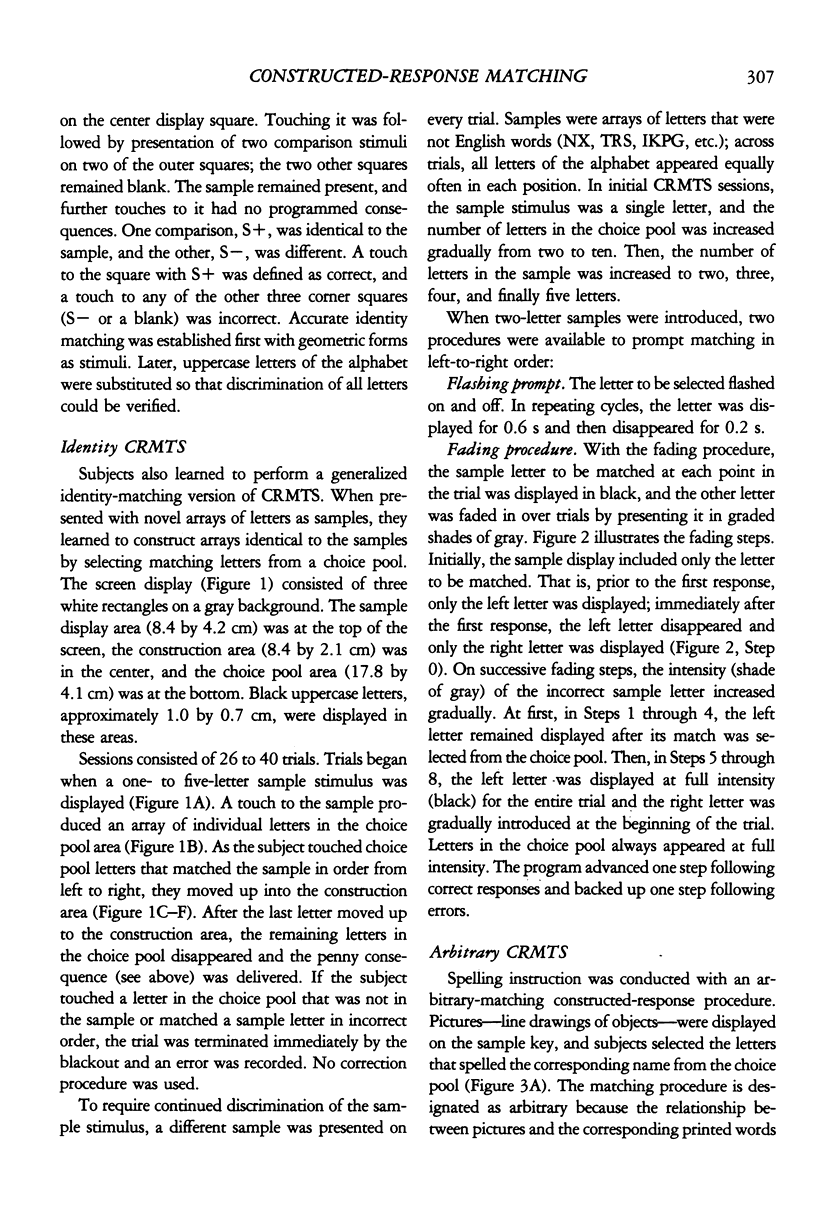
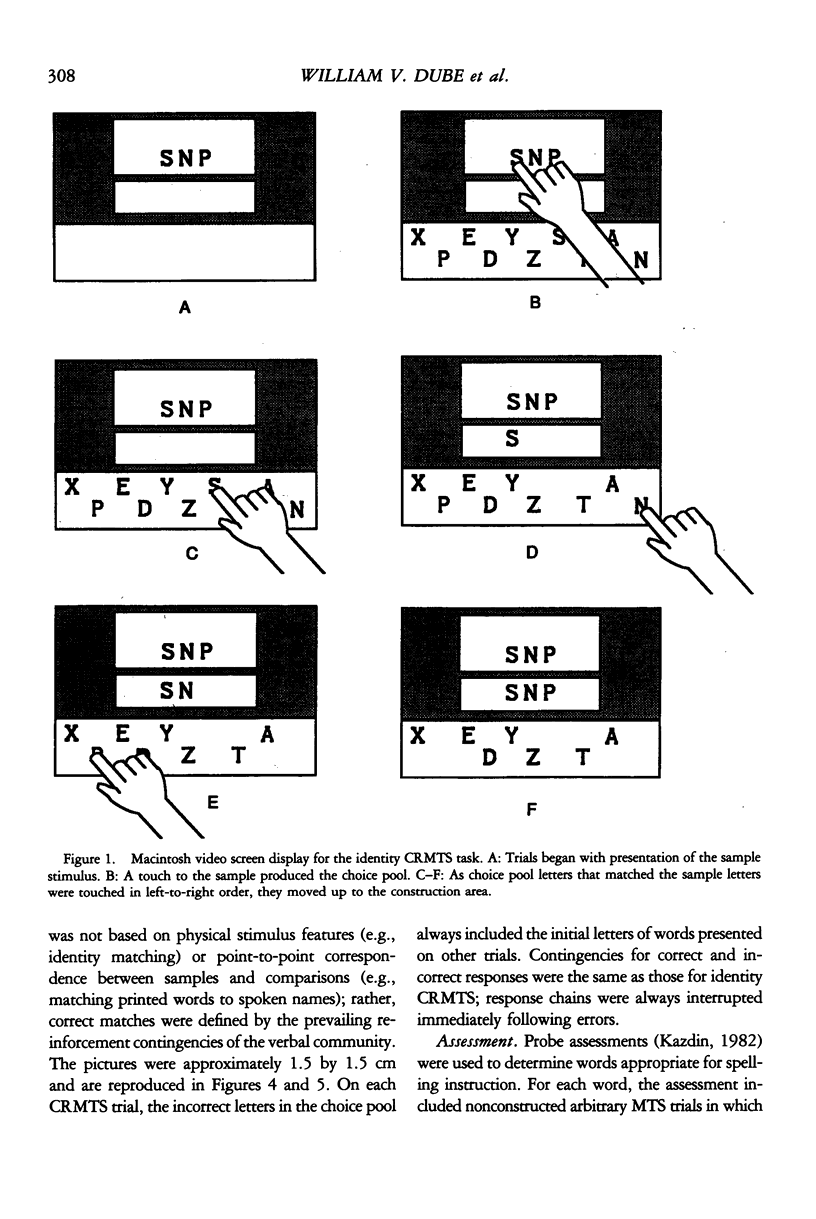
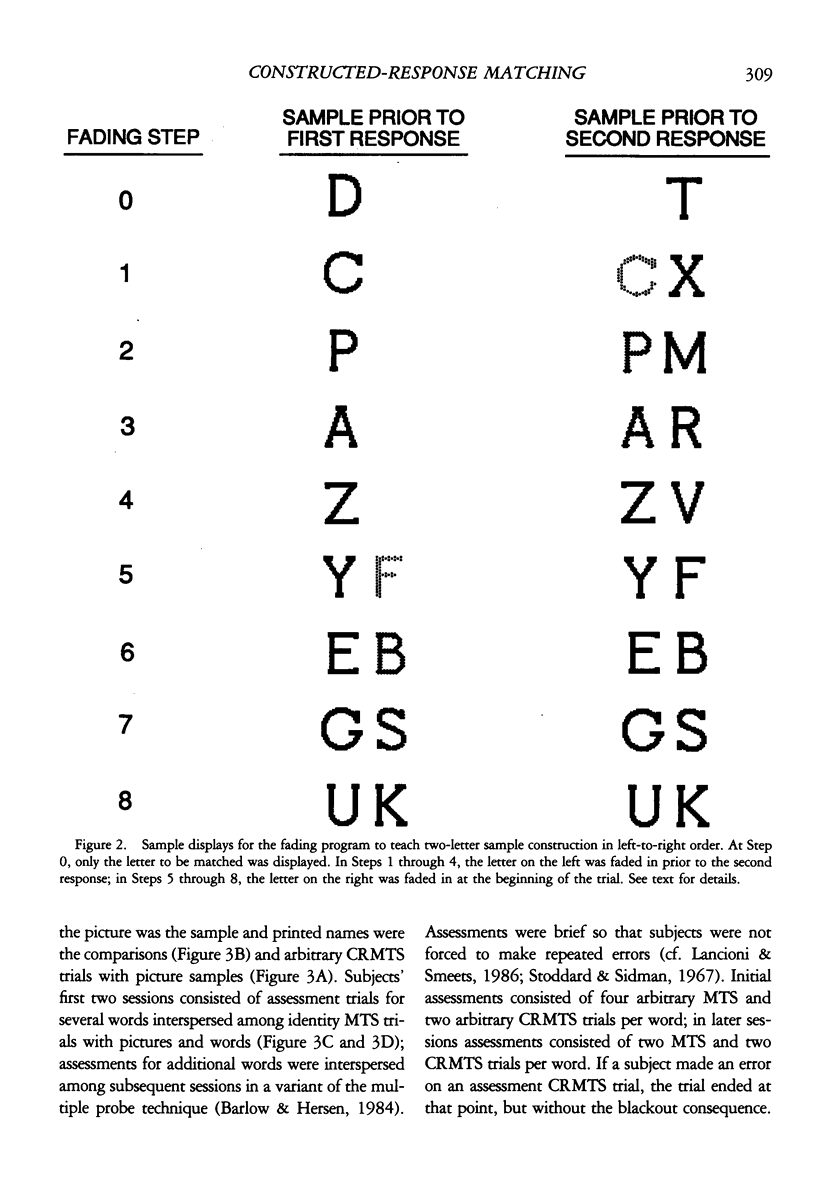
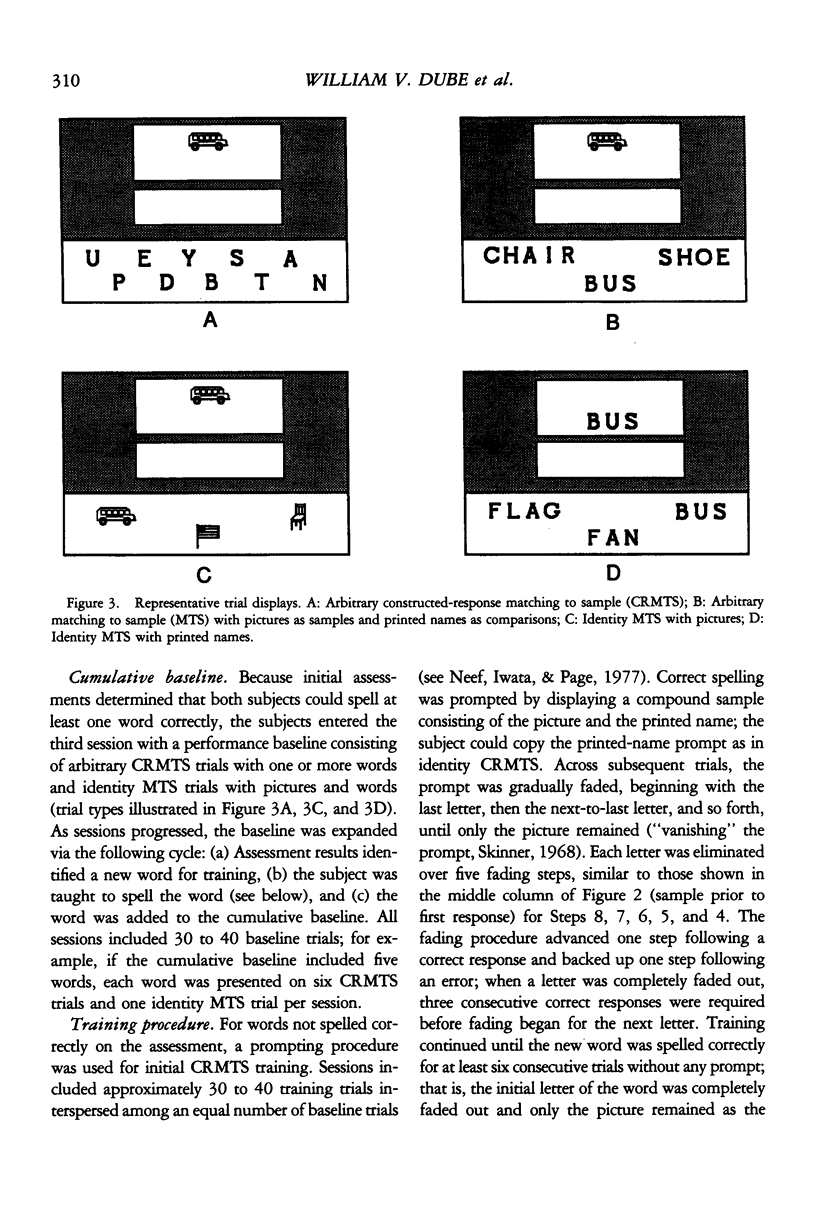
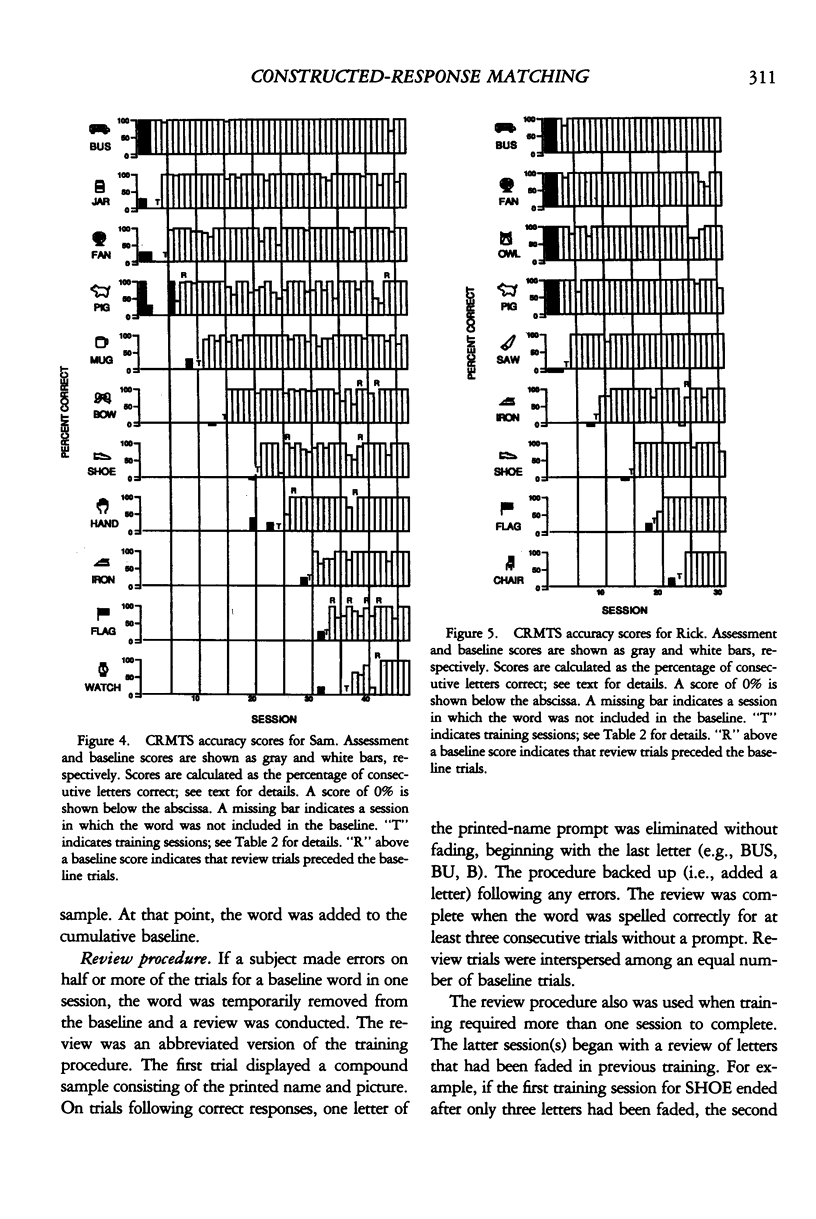
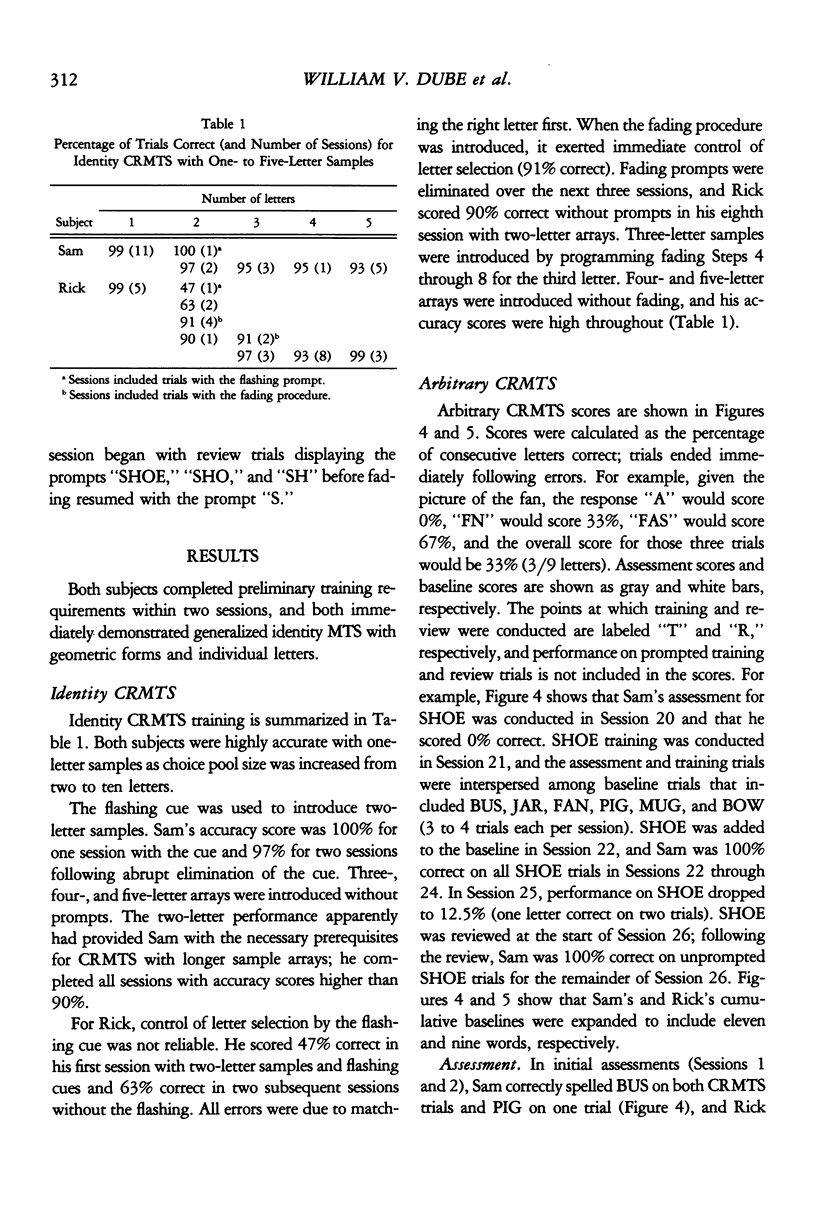
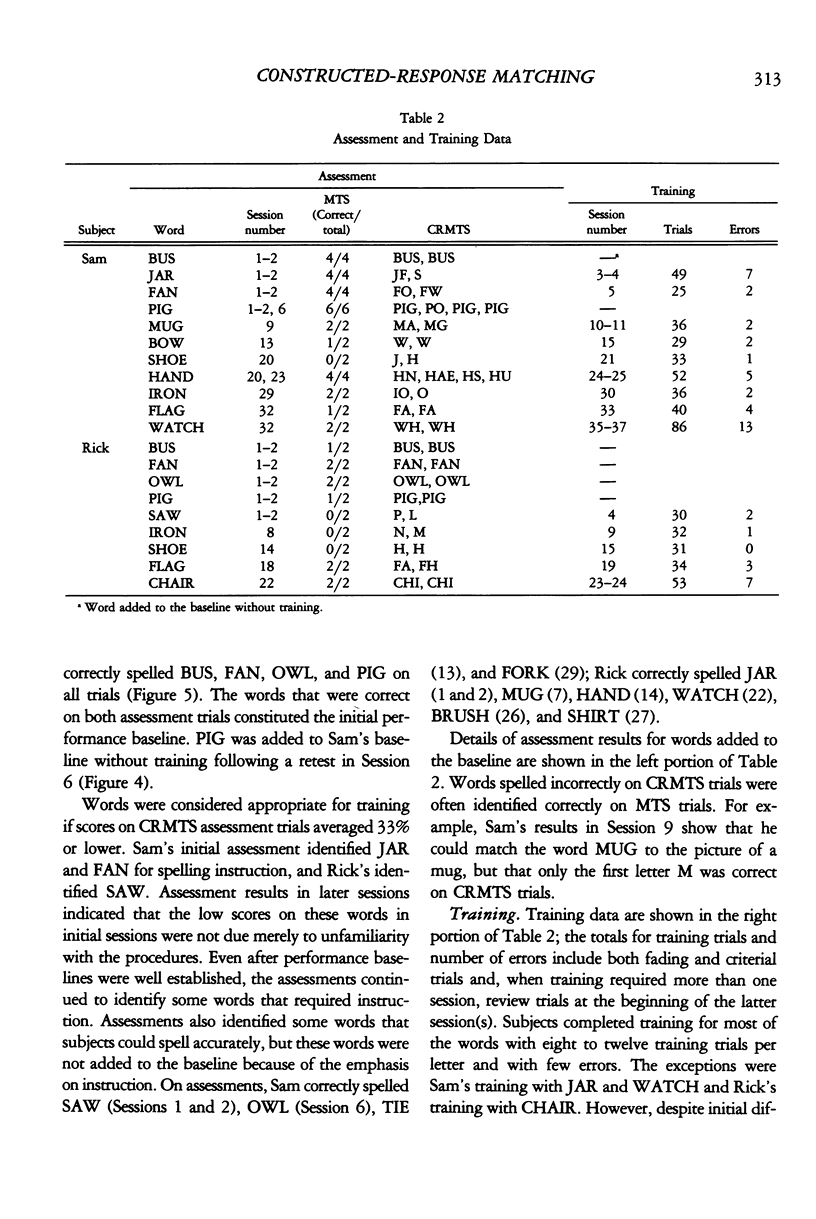
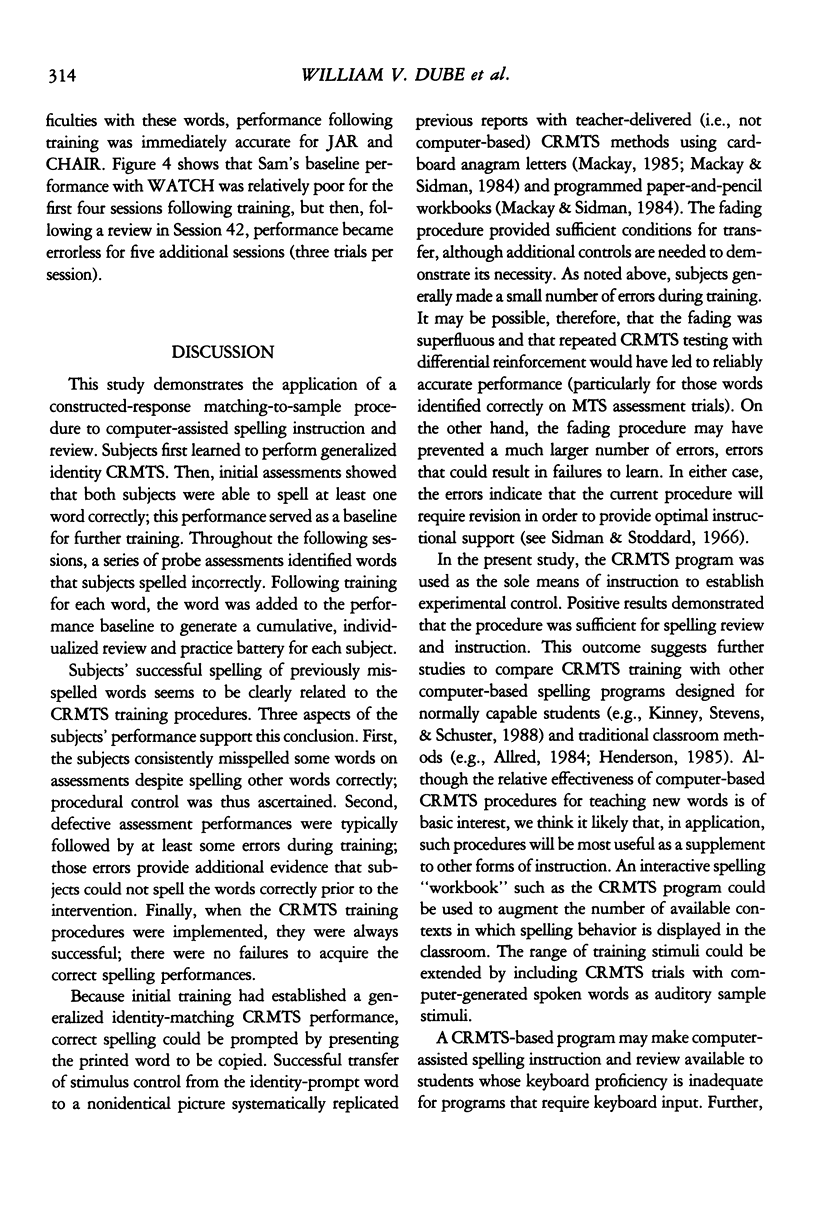
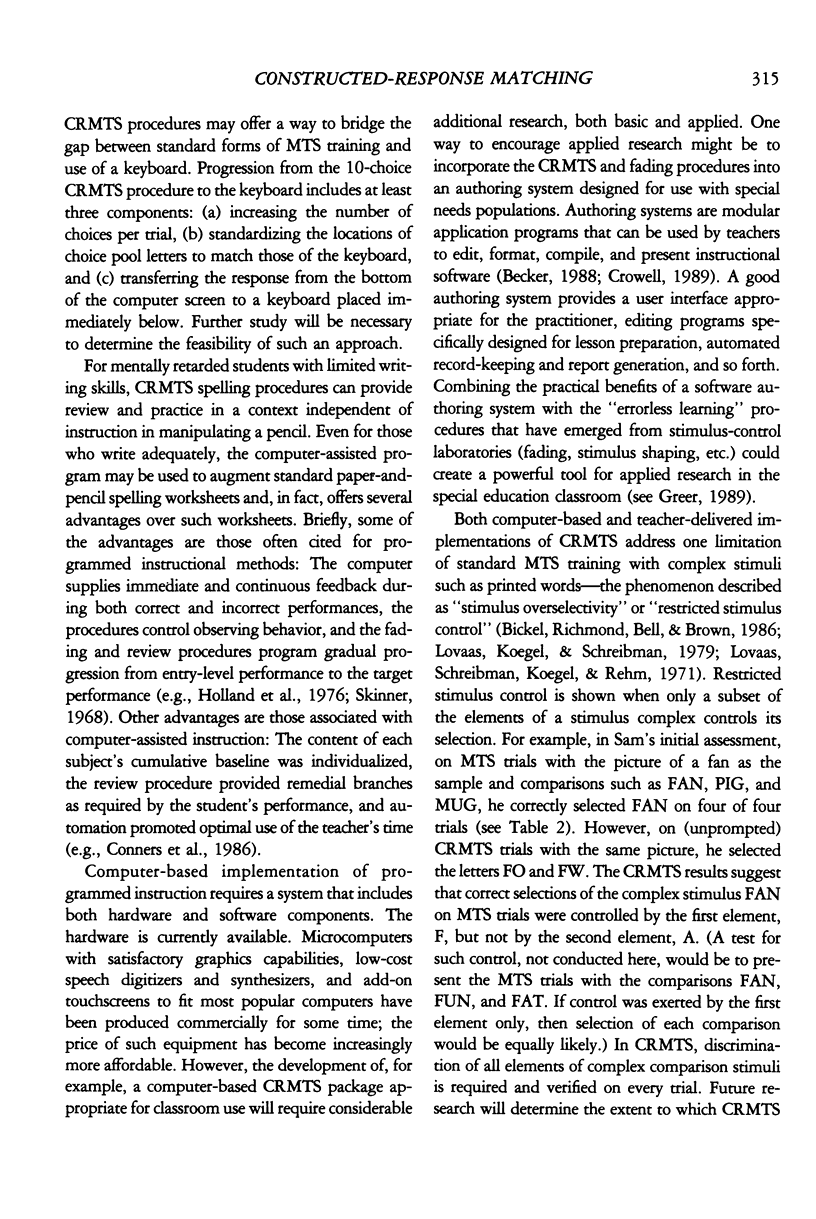

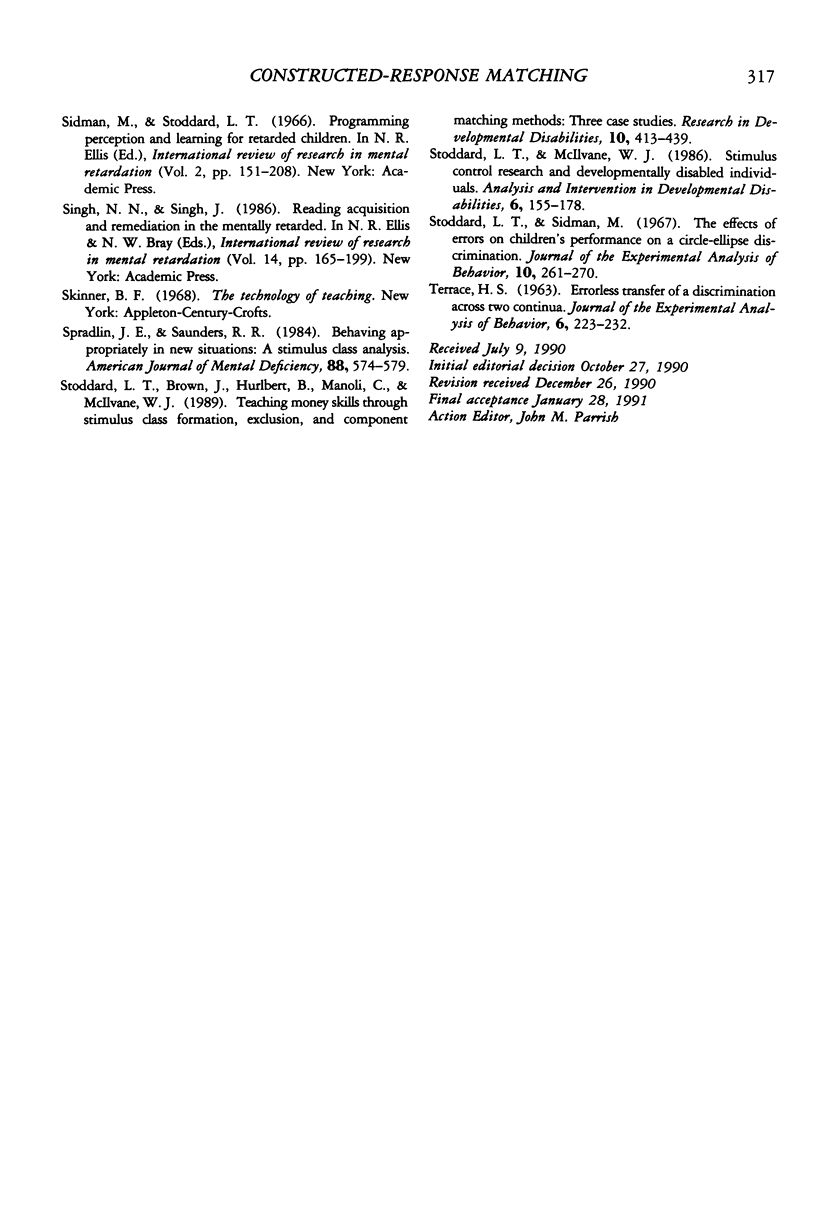
Selected References
These references are in PubMed. This may not be the complete list of references from this article.
- Allen K. D., Fuqua R. W. Eliminating selective stimulus control: a comparison of two procedures for teaching mentally retarded children to respond to compound stimuli. J Exp Child Psychol. 1985 Feb;39(1):55–71. doi: 10.1016/0022-0965(85)90029-3. [DOI] [PubMed] [Google Scholar]
- Budoff M., Hutten L. R. Microcomputers in special education: promises and pitfalls. Except Child. 1982 Oct;49(2):123–128. doi: 10.1177/001440298204900204. [DOI] [PubMed] [Google Scholar]
- Lovaas O. I., Koegel R. L., Schreibman L. Stimulus overselectivity in autism: a review of research. Psychol Bull. 1979 Nov;86(6):1236–1254. [PubMed] [Google Scholar]
- Lovaas O. I., Schreibman L., Koegel R., Rehm R. Selective responding by autistic children to multiple sensory input. J Abnorm Psychol. 1971 Jun;77(3):211–222. doi: 10.1037/h0031015. [DOI] [PubMed] [Google Scholar]
- McDonagh E. C., McIlvane W. J., Stoddard L. T. Teaching coin equivalences via matching to sample. Appl Res Ment Retard. 1984;5(2):177–197. doi: 10.1016/s0270-3092(84)80001-6. [DOI] [PubMed] [Google Scholar]
- doi: 10.1901/jaba.1977.10-738. [DOI] [PMC free article] [Google Scholar]
- Schreibman L., Charlop M. H., Koegel R. L. Teaching autistic children to use extra-stimulus prompts. J Exp Child Psychol. 1982 Jun;33(3):475–491. doi: 10.1016/0022-0965(82)90060-1. [DOI] [PubMed] [Google Scholar]
- Sidman M., Cresson O., Jr, Willson-Morris M. Acquisition of matching to sample via mediated transfer. J Exp Anal Behav. 1974 Sep;22(2):261–273. doi: 10.1901/jeab.1974.22-261. [DOI] [PMC free article] [PubMed] [Google Scholar]
- Sidman M. Reading and auditory-visual equivalences. J Speech Hear Res. 1971 Mar;14(1):5–13. doi: 10.1044/jshr.1401.05. [DOI] [PubMed] [Google Scholar]
- Spradlin J. E., Saunders R. R. Behaving appropriately in new situations: a stimulus class analysis. Am J Ment Defic. 1984 Mar;88(5):574–579. [PubMed] [Google Scholar]
- Stoddard L. T., Brown J., Hurlbert B., Manoli C., McIlvane W. J. Teaching money skills through stimulus class formation, exclusion, and component matching methods: three case studies. Res Dev Disabil. 1989;10(4):413–439. doi: 10.1016/0891-4222(89)90041-3. [DOI] [PubMed] [Google Scholar]
- Stoddard L. T., Sidman M. The effects of errors on children's performance on a circle-ellipse discrimination. J Exp Anal Behav. 1967 May;10(3):261–270. doi: 10.1901/jeab.1967.10-261. [DOI] [PMC free article] [PubMed] [Google Scholar]
- TERRACE H. S. Errorless transfer of a discrimination across two continua. J Exp Anal Behav. 1963 Apr;6:223–232. doi: 10.1901/jeab.1963.6-223. [DOI] [PMC free article] [PubMed] [Google Scholar]


